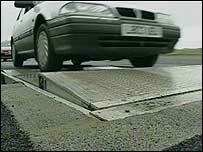Ceci Connolly, Washington Post Staff Writer, reports:
BATON ROUGE, La. — Early in the afternoon of Aug. 29, as Hurricane Katrina bore down on the Gulf Coast, the phones inside the Louisiana State Police emergency operations center here began ringing with frantic pleas for help — 467 that first day.
Families perched on rooftops, a grandmother trapped in an attic, gunfire outside a hospital. As the floodwaters rose, so, too, did the calls — to 1,875 the following day, to 3,108 on Aug. 31, and to 3,284 on Sept. 1. The vast majority came from 70 miles away in New Orleans, but what was strange was not the volume of calls or that they were made, but how they ended up so far away from the people who needed help.
Floodwaters had forced 120 operators at the 911 center to abandon the New Orleans police headquarters. Emergency calls were supposed to be routed to the fire department but its main station was already abandoned. And so — after hours of confusion — many calls were shunted north to Baton Rouge, where unsuspecting emergency personnel suddenly found their phones ringing off the hooks.
The disintegration of New Orleans’s 911 system carries national implications for future disasters, said public safety experts. While some communities boast sophisticated, high-tech centers with elaborate contingency plans, most cities have older systems lacking adequate backup measures for massive disasters.
“People in our country have gotten to believe that no matter what kind of trouble you get into, all you have to do is dial 911,” said William Smith, chief technology officer at BellSouth, which is the phone carrier for New Orleans 911 calls. “That’s not necessarily the case.”
(more…)





